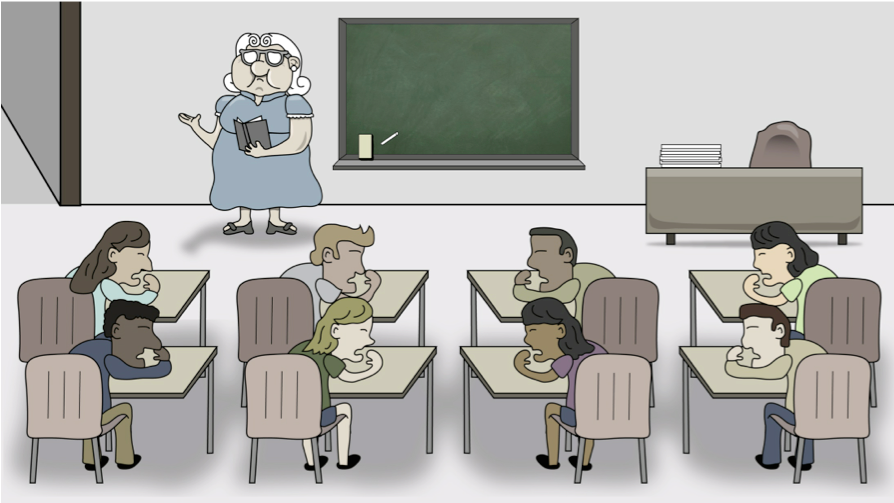Profit margins are razor thin and the business landscape is more competitive than ever. Past inefficiencies that were once tolerable at work are now unsustainable. As businesses, we must adapt or contract. But where does this leave the learning and development department?

Much maligned after years of instructor led training, powerpoint presentations, and “click next” eLearning courses, it’s time for Learning and Development to step up. We have a role to play in the changing economy, and it’s a big one. After all, knowledge is one of the only renewable resources we have, and knowledge workers need to constantly replenish their supply of it.
Many L&D professionals still think of themselves as a trainer. They are the teacher standing in front of the classroom. They are the omnipotent architect of the eLearning curriculum that is delivered via the LMS. They are the Encyclopedia Britannica, the keeper of knowledge. It’s up to them to deliver the skills and training their company will need at their daily jobs. But we stopped buying Encyclopedia Britannica years ago in favor of using Wikipedia.
The same paradigm shift is happening in learning. Knowledge workers are constantly pursuing the information they need to perform their jobs. Whether it’s a quick chat with a coworker in the office, a YouTube search for a how-to guide, or a visit to the user community for the software they are using, the ubiquity of quality information has raised our expectation for speed and ease of acquiring new information.
This mindset does not mesh well with the traditional ADDIE model of eLearning development. The development cycle for producing a suite of eLearning courses can take an incredibly long time. Sometimes, the subject matter being taught is no longer relevant by the time it is delivered to the learner. Even worse, “awareness level” courses attempt to cram loads of content into a single twenty minute course… and the content is never supported or reinforced once the course is completed. Learning and Development need only prove learners have passed the post-test and been exposed to the material to check the box and move on.
This process works quite tidily for L&D, but it leaves learners in a different predicament. While L&D is able to design, develop and deploy these courses in a highly prescribed, organized way, learners are constantly in need of new information throughout the course of their work days. They do not have time to wait for your course to be posted to the LMS, and by the time it is ready they have likely already figured out what it is they need to know.
We need to be able to respond more rapidly to the changing needs of knowledge workers… and we need to have a more accurate picture of what those needs actually are. We need to stop trying to solve business process failures with eLearning modules and we need to start preparing learners to take charge of their own learning. We need to shift our mindset from trainer to community manager. Here’s how:
Trainers Talk, Community Managers listen: This is where the use of a public or private social network becomes incredibly useful. Many companies are using tools like Yammer to bring the social networking experience inside the company firewall. Create a workplace culture where employees actively ask questions, share success stories, and express their joys and frustrations on social media. You’ll be able to see what learning needs people have in real time and rapidly respond with learning aids, tutorial videos, and yes, courses.
Trainers know all the answers, Community Managers connect you with someone who does: Let’s face it, it’s impossible to be a Subject Matter Expert in every field. The traditional instructional design model has L&D working with SMEs to create training, but what about when the need is for a more rapid, informal support tool? Developing an internal social network or support forum where learners can post their problems is ideal. It’s up to the Community Manager to constantly monitor the tool and connect learners with the help they need.
Trainers fire and forget, Community Managers provide long-term support: Formal training has its place, and chances are you will be producing eLearning for years to come. But if the scope of the project ends with the delivery of a course, you’re doing it wrong. Build in a phase in your work plan to support learners with the knowledge gained from an eLearning course. Host in-person or social media chats, post learning aids, or have them play a learning game as a reinforcement tool. Cement the knowledge and make sure they know it for the long haul.
What do you think? Is any of this relevant to your company? I’d love your thoughts. I also give a webinar on the topic.




The paradigm shift is the need of the hour and the sooner the corporate HR realizes the better it is for the said organisation.
I love how the image portrays the value of the Learning/Training function within an organization as well beyond ILT & Courses. I don’t know if we’ll start seeing new job titles appear but I like the concept of re-conceiving the function of a trainer.
Agreed – new job titles are farther in the future. Before we get there, it’s up to trainers and L&D folks to start performing their current roles in new ways.